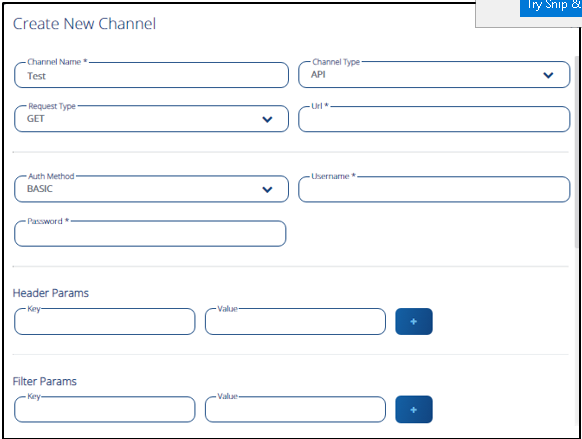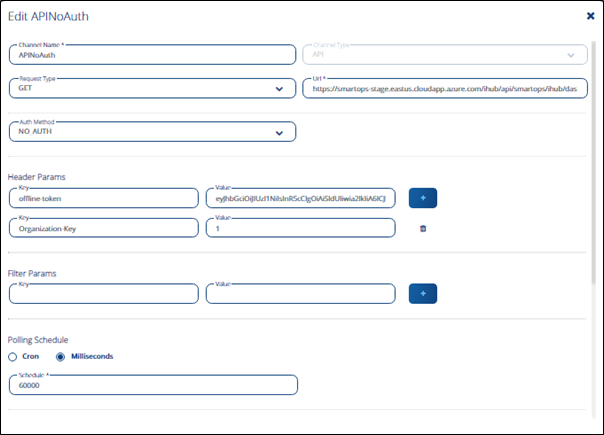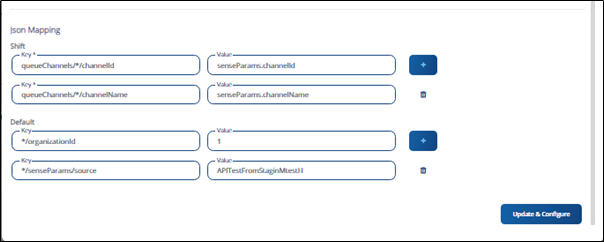Channel - API
API scanner polls the API configured in channel definition, converts the resulted JSON to SmartOps JSON based on the mapping and will place it in SmartOps queue.
-
The Create New Channel window displays the API configurations related blocks as shown in FigureFigure.

-
Define the configurations as explained in the table below:
Field
Description
Request Type
Type of request. Available values are:
-
GET
-
POST
URL
URL for the API request.
Auth Method
Authentication Method: Available values are:
Basic: Access based on user authentication.
No Auth: No authentication required.
Username
E-mail Id of the user.
Password
Password for user authentication.
Header Params
Key
Header parameter to be passed, if required.
Value
Value of the header parameter.
Json Request
Request Json
Request to be posted for POST requests.
Polling Schedule
Schedule
Define the polling schedule. Schedule can be defined as a Cron expression or duration (milliseconds)
Json Mapping - Shift
Key
Value available in Input JSON.
Value
Value to be mapped in SmartOps.
Json Mapping - Default
Key
Field to be passed to SmartOps that is not available in input.
Value
Name / Value for the field.
-
-
To save the configurations, click Save & Configure. An example of screen configuration is as shown in FigureFigure:


Note: In most of the cases the resulting JSON can be an array. If the JSON is an array while specifying the JSON key ‘*’ symbol should be added after the array field name to mark that as an array.
A sample array mapping
is shown in FigureFigure.
